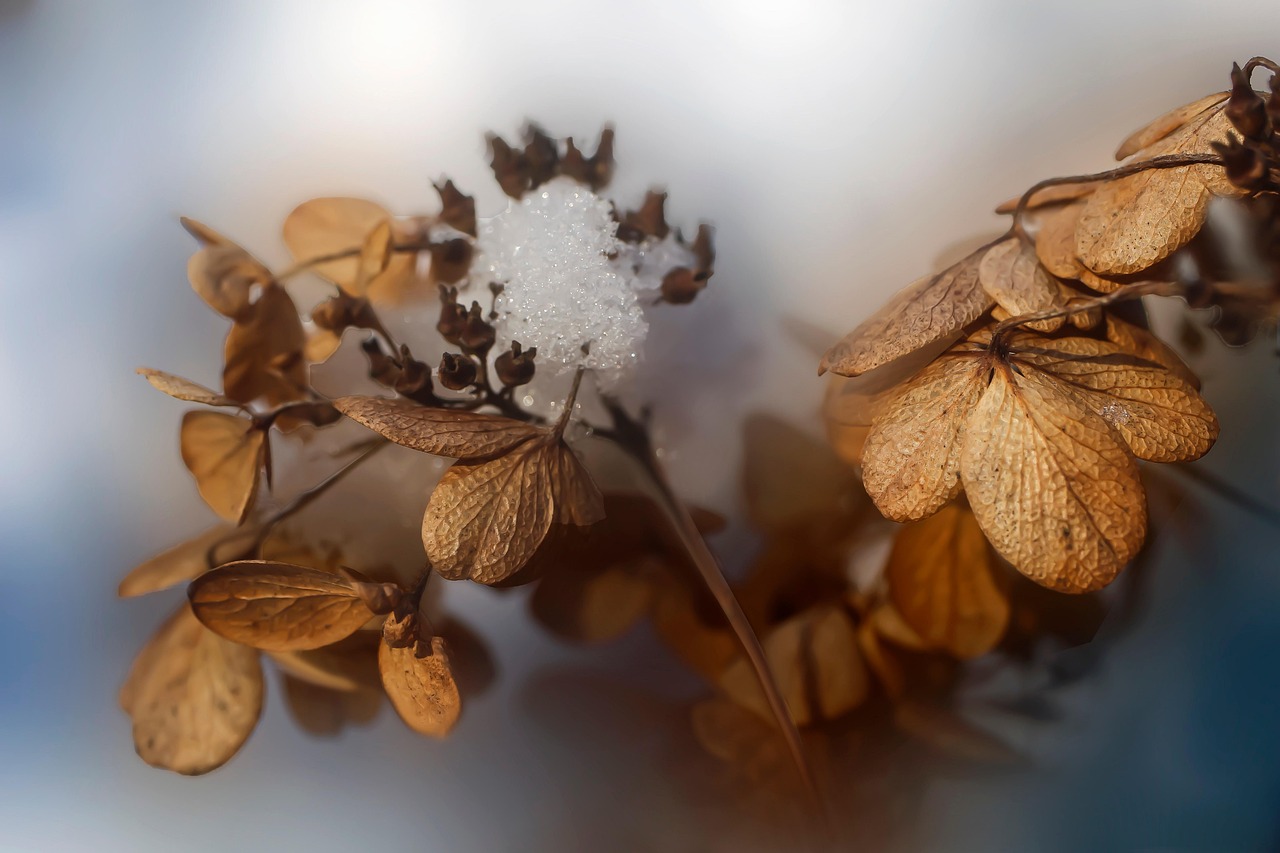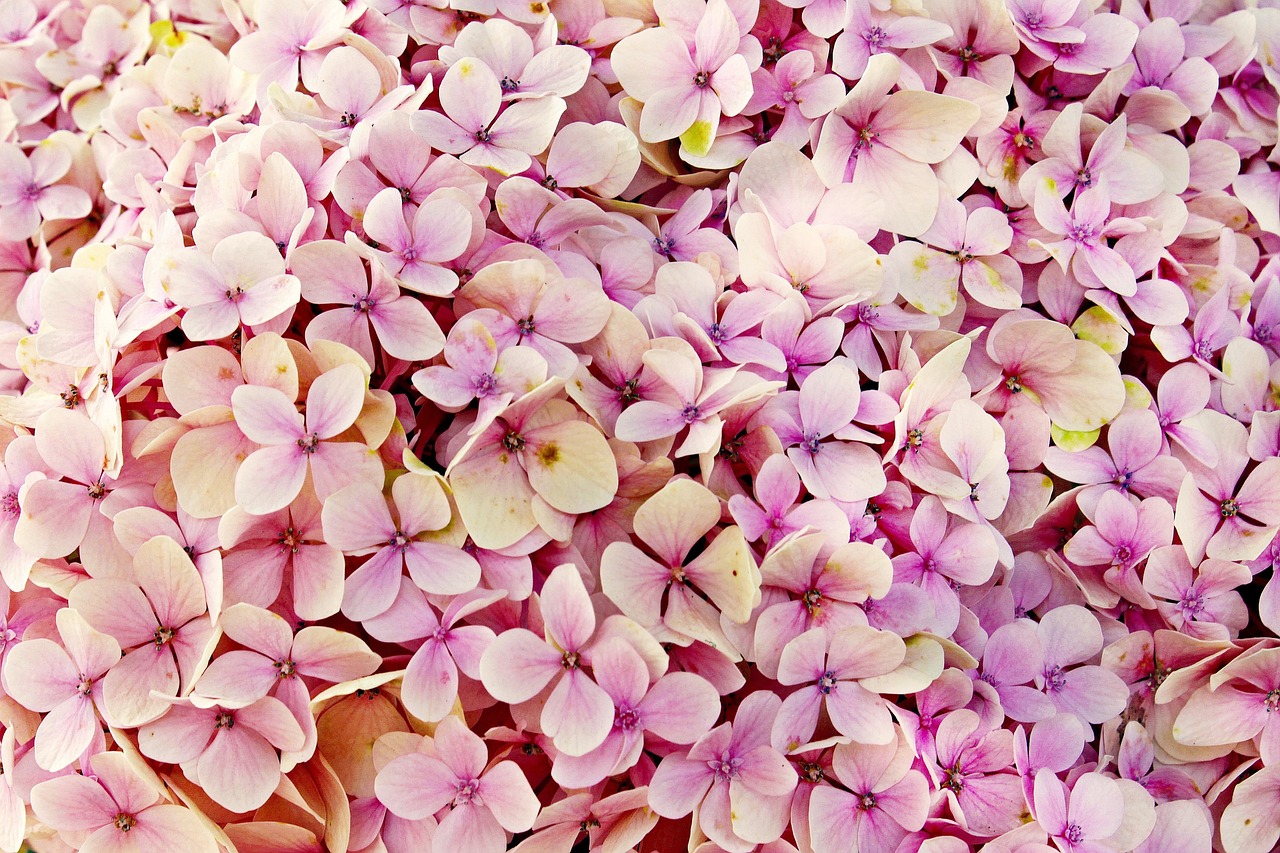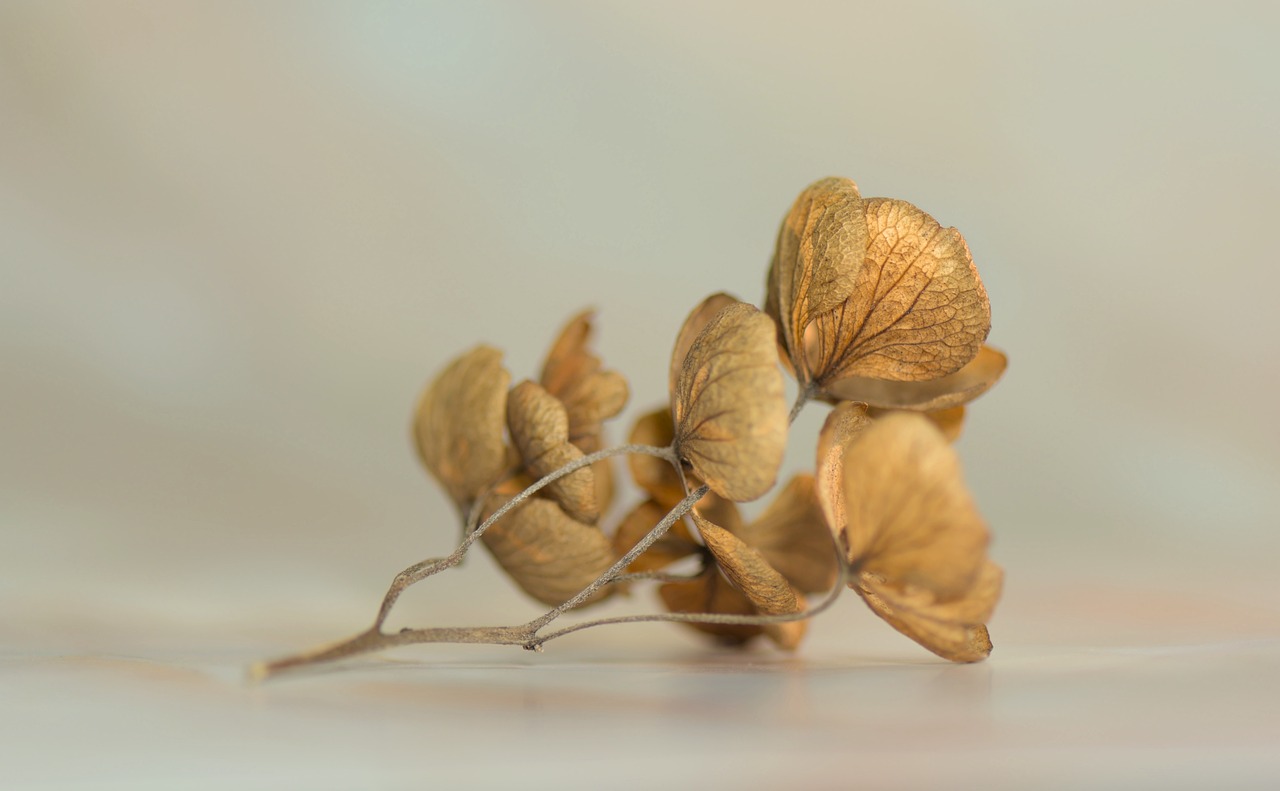Hydrangeas in pots can face various challenges, including improper watering, inadequate light, and pest infestations. Common issues include wilting leaves, stunted growth, and poor flowering. Solutions involve adjusting watering practices, ensuring proper drainage, and monitoring for pests regularly.
Understanding Container Hydrangeas

Hydrangeas are beloved for their stunning blooms and versatility. When grown in pots, they offer the flexibility of being moved around to suit changing light conditions or seasonal decor. However, container gardening presents its own set of challenges. The limited space in pots means that hydrangeas are more susceptible to environmental stressors compared to those planted directly in the ground.
Container hydrangeas are particularly popular among urban gardeners or those with limited outdoor space. These plants can thrive on patios, balconies, or even indoors if given the right care. However, understanding the specific needs of hydrangeas in pots is crucial to maintaining their health and vibrancy.
Common Problems with Hydrangeas in Pots
There are several common problems that gardeners encounter when cultivating hydrangeas in containers. Identifying these issues early can prevent irreversible damage to the plants. Here are some frequent problems:
- Watering Issues: Both overwatering and underwatering can lead to wilting leaves and root rot.
- Pest Infestations: Aphids, spider mites, and other pests can quickly damage the foliage.
- Soil Quality: Poor soil can lead to nutrient deficiencies and stunted growth.
- Temperature Extremes: Containers can heat up or cool down faster than garden soil, affecting plant health.
- Insufficient Light: Hydrangeas require adequate sunlight for optimal blooming.
Watering Hydrangeas in Pots
Watering is one of the most critical aspects of caring for potted hydrangeas. These plants need consistent moisture but do not tolerate soggy soil. Here are some tips to ensure proper watering:
- Check Soil Moisture: Stick your finger into the soil about an inch deep. If it feels dry, it’s time to water.
- Use Quality Potting Mix: A well-draining potting mix is essential to prevent waterlogging.
- Water Thoroughly: When watering, ensure that water flows out of the drainage holes, indicating the soil is thoroughly saturated.
Pest Management for Container Hydrangeas
Pests can pose a significant threat to hydrangeas in pots. Regular monitoring is essential for early detection. Here are some strategies for managing pests effectively:
- Regular Inspections: Check the undersides of leaves and stems for signs of pests.
- Natural Remedies: Use insecticidal soap or neem oil as organic options for pest control.
- Encourage Beneficial Insects: Ladybugs and lacewings can help control pest populations naturally.
Choosing the Right Location
The location of your potted hydrangeas plays a vital role in their health. Here are some factors to consider when choosing where to place your pots:
- Sunlight: Hydrangeas generally prefer partial shade, especially during the hottest parts of the day.
- Protection from Wind: Position pots in a way that shields them from strong winds that could damage the foliage.
- Avoid Direct Heat Sources: Keep pots away from heat-emitting surfaces like concrete or brick walls.
Caring for hydrangeas in pots requires attention to detail and an understanding of their unique needs. By addressing common issues proactively, you can enjoy vibrant blooms all season long.
Soil and Fertilization for Container Hydrangeas
The choice of soil and fertilization plays a crucial role in the health of hydrangeas planted in pots. Proper soil provides essential nutrients and drainage, while appropriate fertilization ensures that the plants receive the necessary sustenance throughout their growth period.
Choosing the Right Soil
Using the right potting mix is essential for container hydrangeas. Here are some characteristics of a suitable soil mix:
- Well-Draining: Hydrangeas do not thrive in soggy conditions. A mix that allows excess water to drain is essential.
- Organic Matter: Incorporating compost can enrich the soil, providing necessary nutrients to the plants.
- pH Level: Hydrangeas prefer a slightly acidic to neutral pH level (around 5.5 to 7.0) for optimal growth.
Commercial potting mixes designed for flowering plants often contain the right balance of ingredients. However, you can also create your own mix by combining equal parts of peat moss, pine bark, and perlite or sand. This blend will promote good drainage while retaining enough moisture for the hydrangeas.
Fertilization Techniques
Fertilizing hydrangeas in pots requires careful attention to timing and application. Here are some important tips:
- Timing: Begin fertilizing in early spring as new growth starts and continue every 4-6 weeks until late summer.
- Choose the Right Fertilizer: Use a balanced, slow-release fertilizer that is high in potassium and phosphorus to encourage blooming.
- Follow Recommendations: Always adhere to the instructions on the fertilizer packaging to avoid over-fertilization, which can harm the plants.
Pruning Container Hydrangeas
Pruning is an important practice that helps maintain the shape and health of container hydrangeas. Proper pruning can encourage more vigorous growth and enhance flowering.
When to Prune
The timing of pruning varies depending on the type of hydrangea. Here are some general guidelines:
- Bigleaf Hydrangeas (Hydrangea macrophylla): Prune immediately after flowering to avoid cutting off next year’s blooms.
- Panicled Hydrangeas (Hydrangea paniculata): These can be pruned in late winter or early spring before new growth begins.
- Oakleaf Hydrangeas (Hydrangea quercifolia): Similar to bigleaf varieties, prune after flowering.
How to Prune
When pruning container hydrangeas, follow these steps:
- Use clean, sharp pruning shears to prevent disease transmission.
- Remove dead or damaged stems first to improve overall plant health.
- Thin out crowded stems to allow better air circulation and light penetration.
- Cut back long stems by one-third to encourage bushier growth.
Managing Seasonal Changes

Container hydrangeas require specific care during seasonal changes. Understanding how to manage these transitions is key to keeping your plants healthy throughout the year.
Summer Care
During the hot summer months, hydrangeas will need extra attention:
- Increased Watering: Containers dry out faster in heat. Monitor moisture levels closely and water when needed.
- Mulching: Adding a layer of mulch on top of the soil can help retain moisture and regulate soil temperature.
Winter Protection
In colder months, protecting potted hydrangeas from freezing temperatures is essential:
- Insulation: Wrap pots with burlap or bubble wrap to insulate them from cold.
- Sheltered Location: Move pots closer to walls or under eaves where they are sheltered from harsh winds.
Caring for container hydrangeas involves understanding their unique requirements regarding soil, fertilization, pruning, and seasonal management. By addressing these aspects effectively, you can promote healthier plants that produce beautiful blooms year after year.
Dealing with Common Diseases in Container Hydrangeas
Container hydrangeas are susceptible to various diseases that can hinder their growth and flowering potential. Recognizing the signs of these diseases early can help in effective management and treatment.

Identifying Common Diseases
Here are some common diseases that may affect your potted hydrangeas:
- Powdery Mildew: This fungal disease appears as a white, powdery substance on the leaves. It thrives in warm, dry conditions.
- Leaf Spot: Caused by various fungal pathogens, leaf spots appear as brown or dark spots on the leaves, often leading to leaf drop.
- Root Rot: This condition results from overwatering and poor drainage. It causes the roots to decay, leading to wilting and yellowing of leaves.
Preventive Measures
Preventing diseases in container hydrangeas is often more effective than treating them. Here are some strategies:
- Avoid Overcrowding: Ensure adequate space between plants to improve air circulation and reduce humidity levels.
- Proper Watering: Water at the base of the plant rather than overhead to minimize moisture on the foliage.
- Choose Resistant Varieties: Some hydrangea varieties are more resistant to diseases. Research before selecting plants for your containers.
Treatment Options
If your hydrangeas do become diseased, there are treatment options available:
- Fungicides: Apply fungicides specifically designed for the type of disease affecting your hydrangeas. Always follow label instructions for safe application.
- Remove Infected Leaves: Prune away any diseased leaves or stems to prevent the spread of disease within the plant.
- Improve Drainage: If root rot is suspected, repot the plant into fresh, well-draining soil and a clean pot.
Managing Pests Effectively
Pests can significantly impact the health of container hydrangeas. By implementing preventive measures and monitoring regularly, you can keep these pests at bay.
Common Pests Affecting Hydrangeas
The following pests are frequently encountered with potted hydrangeas:
- Aphids: These small insects suck sap from the leaves, causing stunted growth and curling leaves.
- Spider Mites: Tiny but deadly, spider mites create fine webs and cause leaf discoloration and drop.
- Whiteflies: Similar to aphids, whiteflies feed on plant sap and can transmit diseases.
Preventive Strategies Against Pests
To minimize pest problems, consider the following strategies:
- Regular Monitoring: Check plants weekly for pest activity. Early detection is key to effective management.
- Encourage Natural Predators: Attract beneficial insects like ladybugs that prey on harmful pests.
- Keep Plants Healthy: Strong, healthy plants are less susceptible to pest infestations. Proper watering and fertilization play vital roles in maintaining plant health.
Treatment Methods for Pest Infestations
If pests are detected, immediate action is necessary to prevent further damage:
- Insecticidal Soap: This is a safe option for controlling soft-bodied insects like aphids and spider mites.
- Neem Oil: An organic treatment that disrupts the life cycle of many pests.
- Pesticidal Granules: Applying granules in the soil can help manage soil-dwelling pests.
The Importance of Seasonal Care Adjustments
The care of container hydrangeas changes with the seasons. Understanding how to adjust care practices is critical for year-round success.
Spring Care Adjustments
As temperatures warm in spring, you will need to adjust your care routine:
- Fertilization Begins: Start applying a balanced fertilizer as new growth appears.
- Pest Monitoring: Inspect for early signs of pests as plants awaken from dormancy.
Autumn Care Adjustments
As fall approaches, prepare your hydrangeas for winter dormancy:
- Reduce Watering: Decrease watering frequency as growth slows down.
- Final Pruning: Make any necessary cuts after blooming has ceased but before frost sets in.
By being proactive in addressing diseases, pests, and seasonal adjustments, you can ensure that your container hydrangeas thrive throughout their growing cycle.
Common Varieties of Hydrangeas for Containers

Choosing the right variety of hydrangea is essential for successful container gardening. Different types of hydrangeas have distinct characteristics, growth habits, and requirements. Here are some popular varieties that thrive in pots:
- Bigleaf Hydrangeas (Hydrangea macrophylla): Known for their large, showy blooms, these hydrangeas can produce flowers in shades of blue or pink, depending on soil pH.
- Panicled Hydrangeas (Hydrangea paniculata): These varieties are very hardy and can tolerate more sunlight than other types. They produce cone-shaped flower clusters.
- Oakleaf Hydrangeas (Hydrangea quercifolia): With unique oak-shaped leaves and stunning fall color, these hydrangeas also produce beautiful white flowers that age to pink.
- Climbing Hydrangeas (Hydrangea anomala subsp. petiolaris): Ideal for trellises or vertical gardening, these can provide beautiful coverage and stunning blooms while taking up minimal ground space.
Selecting the right variety based on your climate, available sunlight, and desired aesthetic will help ensure your container hydrangeas flourish.
Watering Practices in Different Climates
The watering needs of container hydrangeas can significantly vary depending on the climate. Understanding how to adjust your watering practices according to different weather conditions is essential for their health.
In Hot Climates
In hotter regions, container plants tend to dry out more quickly. Here are some techniques to manage watering:
- Frequent Checks: Check the moisture level daily, especially during heat waves.
- Use Self-Watering Pots: Consider pots with built-in reservoirs to help maintain consistent moisture levels.
- Water Early or Late: Watering in the early morning or late afternoon helps reduce evaporation and allows the roots to absorb moisture effectively.
In Cooler Climates
In cooler regions, plants may require less frequent watering:
- Avoid Overwatering: Ensure pots have proper drainage to prevent root rot, especially during rainy seasons.
- Monitor Soil Moisture: Use a moisture meter to determine when it’s actually time to water.
Enhancing Aesthetic Appeal with Container Design
The visual appeal of your hydrangeas can be enhanced by selecting the right containers and companion plants. Here are some ideas:
- Colorful Pots: Choose pots that complement the color of the hydrangea blooms for a coordinated look.
- Companion Planting: Pair hydrangeas with other flowering plants like petunias or annuals that bloom at the same time to create a vibrant display.
- Height Variation: Use varying heights of containers to create an eye-catching tiered effect in your garden space.
Final Thoughts
Caring for hydrangeas in pots requires an understanding of their specific needs regarding water, soil, light, and overall environment. By recognizing common problems—such as diseases and pests—and employing effective management strategies, you can foster thriving container hydrangeas that bloom beautifully throughout the growing season.
Selecting appropriate varieties, adjusting care practices based on seasonal changes, and enhancing their visual appeal through thoughtful container design will contribute to a successful gardening experience. With proper attention and care, container hydrangeas can be a stunning addition to any garden space, providing beauty and joy for years to come.
As you embark on your journey with container hydrangeas, remember that patience and observation are key. Each plant is unique and may have its own set of preferences. By being attentive and responsive to their needs, you will undoubtedly enjoy a flourishing display of blooms that will brighten your outdoor spaces.
